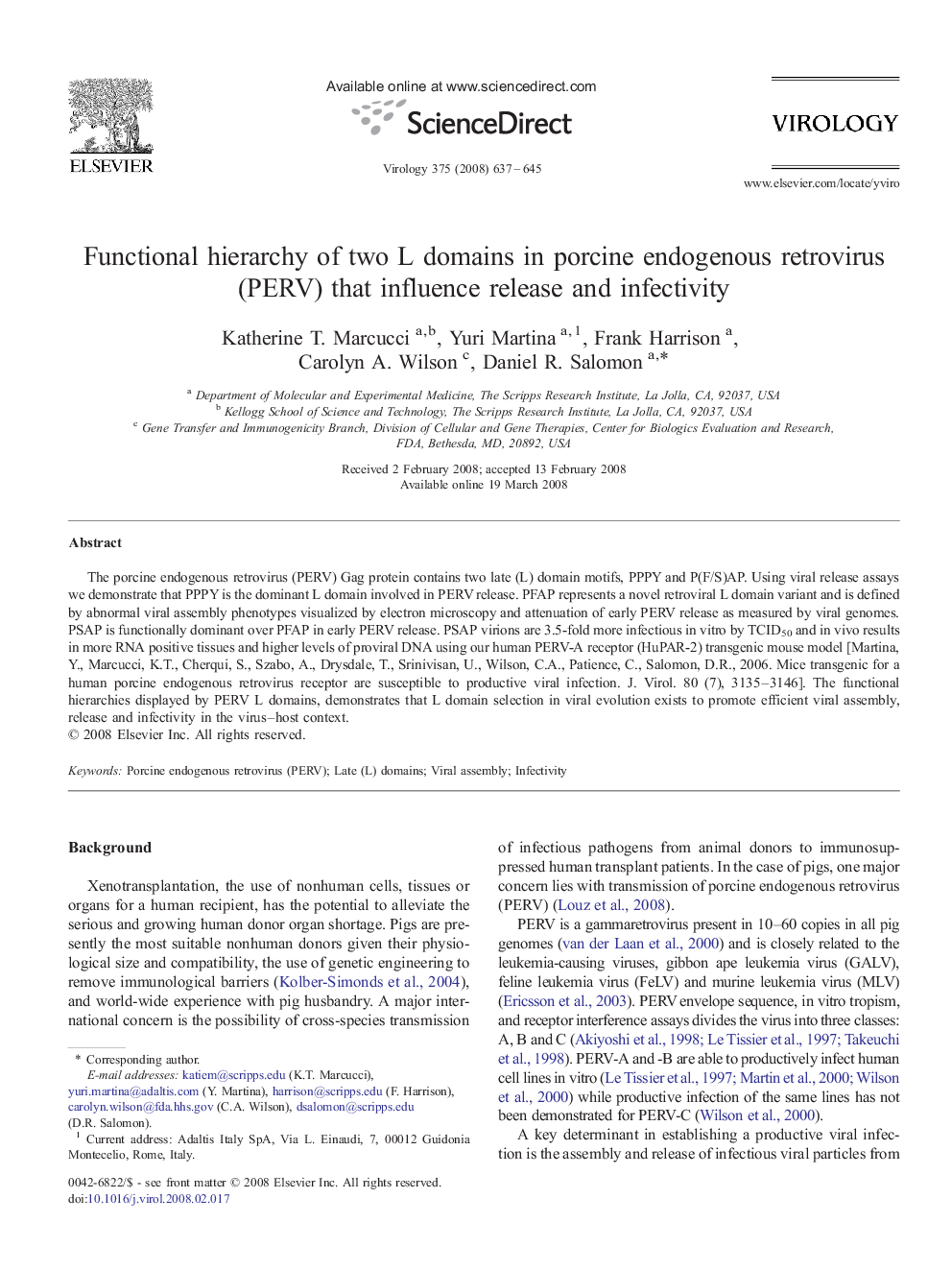| Article ID | Journal | Published Year | Pages | File Type |
|---|---|---|---|---|
| 6141991 | Virology | 2008 | 9 Pages |
Abstract
The porcine endogenous retrovirus (PERV) Gag protein contains two late (L) domain motifs, PPPY and P(F/S)AP. Using viral release assays we demonstrate that PPPY is the dominant L domain involved in PERV release. PFAP represents a novel retroviral L domain variant and is defined by abnormal viral assembly phenotypes visualized by electron microscopy and attenuation of early PERV release as measured by viral genomes. PSAP is functionally dominant over PFAP in early PERV release. PSAP virions are 3.5-fold more infectious in vitro by TCID50 and in vivo results in more RNA positive tissues and higher levels of proviral DNA using our human PERV-A receptor (HuPAR-2) transgenic mouse model [Martina, Y., Marcucci, K.T., Cherqui, S., Szabo, A., Drysdale, T., Srinivisan, U., Wilson, C.A., Patience, C., Salomon, D.R., 2006. Mice transgenic for a human porcine endogenous retrovirus receptor are susceptible to productive viral infection. J. Virol. 80 (7), 3135-3146]. The functional hierarchies displayed by PERV L domains, demonstrates that L domain selection in viral evolution exists to promote efficient viral assembly, release and infectivity in the virus-host context.
Keywords
Related Topics
Life Sciences
Immunology and Microbiology
Virology
Authors
Katherine T. Marcucci, Yuri Martina, Frank Harrison, Carolyn A. Wilson, Daniel R. Salomon,
